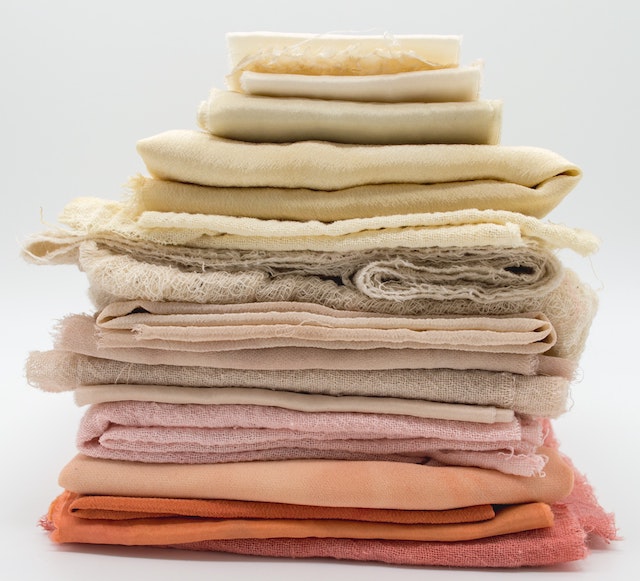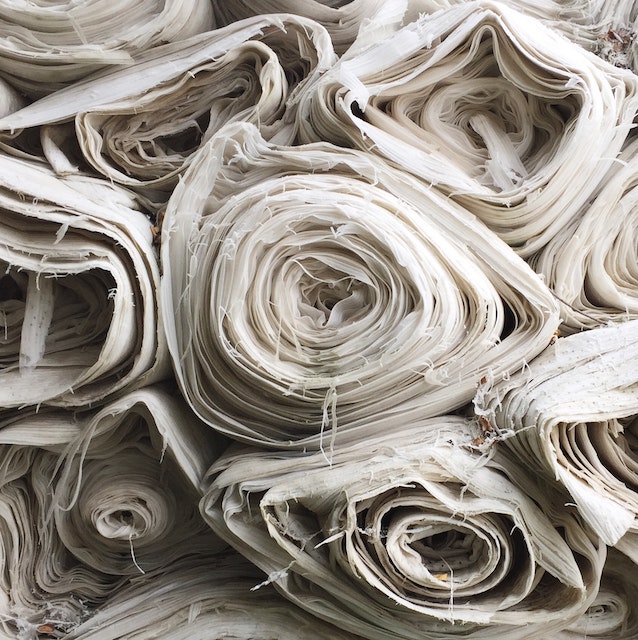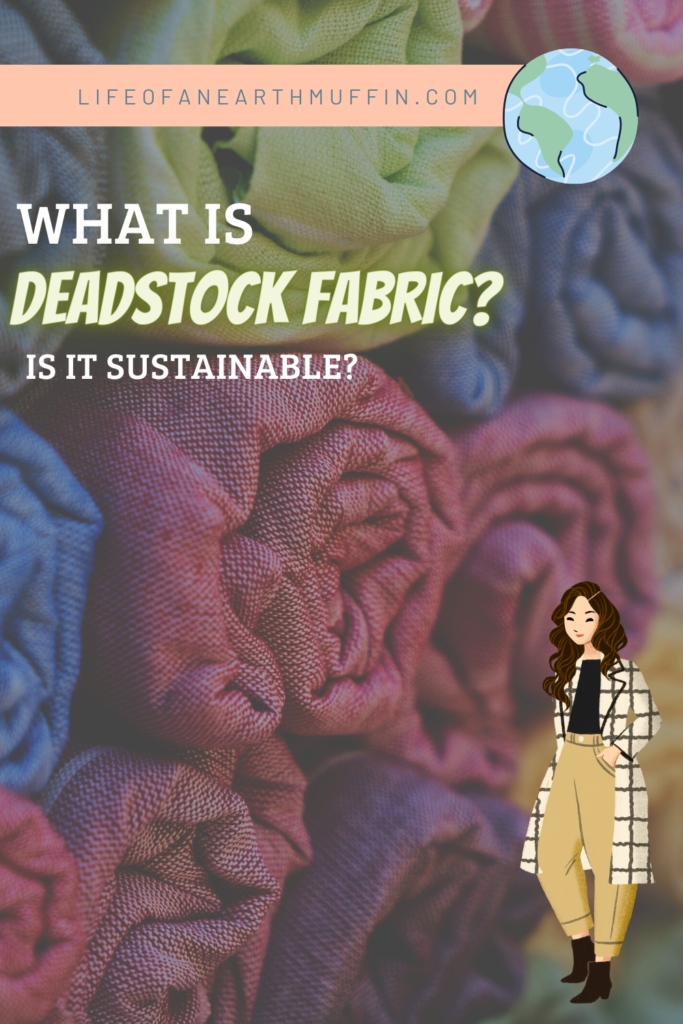Hey earth muffins! With a big boom in sustainable fashion companies, there has been an increase in clothing created from deadstock fabric. You might be asking yourself, “Well, what exactly is deadstock?”. I was doing some reading on it recently, so I thought it would be a great post to write. Here is the truth about deadstock!

What is Deadstock Fabric?
“Deadstock fabric” encompasses numerous things:
- Unsold fabric from mills
- Overstock (fabrics that did not sell)
- Scraps from production runs by brands
- Damaged or imperfect fabrics
With the rise in popularity of eco-friendly living, there has been an influx in brands that use deadstock fabric in their pieces. But, is deadstock actually sustainable?
The Good Things About Using Deadstock Fabric
The biggest pro to deadstock fabrics is using up what would typically end up in the landfill. This is obviously better for the planet, as there is less waste that has to breakdown. On top of that, creating fashion items with fabrics that have already used up water and energy is much more eco-efficient than having to create pieces with new fabric.
Another positive to deadstock fabrics is the unique pieces that are created. Just look at the creations by Zero Waste Daniel – all are funky and one-of-a-kind! By using deadstock, sustainable companies are able to create fashion pieces that are a statement for you and the environment.

Because this fabric is the leftovers or unsold pieces, this also means they are often much cheaper to purchase. This enables smaller brands to afford it, which increases access to the fashion industry. Most sustainable brands start out small and have to compete with huge fashion giants, so this is a huge plus for them!
The Not-So-Great Truth About Deadstock Fabric
While deadstock fabric seems like a win for the environment, there is actually a big debate about if it is actually just a form of greenwashing. According to some sources, factories overseas may just be over producing garments so that they can sell scraps as “deadstock fabric”… This is super wasteful as water, energy, and good fabrics are used to create garments that have already been designated as deadstock. With a market for deadstock fabrics now, this also incentivizes factories to overproduce (which, as we know, is never a good thing).
On top of this, there are barely any regulations on classifying “deadstock”. While these fabrics might just be leftovers from a production run, they might actually be flawed, lower quality, or didn’t pass a chemical test. Some people use the term deadstock to just mean damaged fabrics – is that really what you want your clothes to be made out of?

So, is deadstock fabric sustainable or not? Truthfully, I’m not really convinced in either direction. There are pros and cons to using deadstock… And just because a sustainable company uses this fabric in their fashion pieces does not make them automatically the best eco-friendly choice. There are plenty of other things to consider too: how they treat their workers, the energy efficiency of their factories, etc. Do you have any deadstock fabric clothing? Comment below if you think deadstock is eco-friendly or not!
Love,
Jenna ♥





Oh, this is so interesting. I’d never heard of deadstock fabric before, so this was really fascinating.